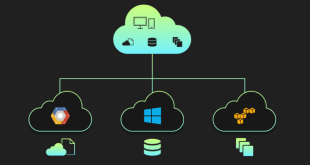In the rapidly evolving digital landscape, private cloud environments have become a cornerstone of modern businesses, providing unparalleled scalability, flexibility, and cost-efficiency. However, with great power comes great responsibility, and the security of these private clouds must be a top priority for organizations. Traditional security approaches are no longer sufficient to counter the sophisticated cyber threats that loom large today. In this blog, we delve into the world of Zero-Trust Architectures for private cloud environments – a revolutionary approach to cloud security that challenges the conventional perimeter-based model and embraces a more proactive and adaptive strategy.
Understanding the Need for Zero-Trust Architectures
The Shift in Cybersecurity Landscape
The ever-increasing number of cyberattacks and data breaches has demonstrated that conventional perimeter-based security models are no longer adequate. Hackers are finding ingenious ways to infiltrate networks, and once inside, they can freely move laterally, causing significant damage before detection. In response to this evolving threat landscape, Zero-Trust Architectures have emerged as a more effective and proactive solution.
What is Zero-Trust?
Zero-Trust is a cybersecurity framework built on the principle of “never trust, always verify.” Unlike traditional approaches that automatically trust anything inside the network perimeter, Zero-Trust assumes that all network resources are potentially compromised and requires verification of every user, device, and application trying to access the system.
Key Components of Zero-Trust Architectures
Micro-Segmentation: This involves dividing the network into smaller, isolated segments, making it more challenging for attackers to move laterally and limiting the impact of a potential breach.
Identity and Access Management (IAM): IAM plays a pivotal role in Zero-Trust. Multi-factor authentication, least privilege access, and continuous verification are core principles.
Behavioral Analytics: This component monitors user behavior, application usage, and data access to detect anomalies and potential threats in real-time.
Encryption: Strong encryption ensures that even if attackers gain access, the data remains unintelligible and useless.
The Advantages of Zero-Trust Architectures for Private Clouds
Enhanced Security Posture
By adopting a Zero-Trust model, organizations can significantly strengthen their security posture. The principle of “never trust, always verify” ensures that unauthorized access is thwarted, even in the event of a perimeter breach.
Protection from Insider Threats
Insider threats pose a significant risk to organizations. Zero-Trust mitigates this risk by continuously verifying user identity and access permissions, making it harder for malicious insiders to wreak havoc undetected.
Simplified Compliance
For organizations operating in highly regulated industries, compliance is a constant challenge. Zero-Trust frameworks align well with compliance requirements, providing the necessary controls and monitoring to meet regulatory standards.
Agility and Scalability
Zero-Trust Architectures allow for flexible scalability, making it easier for businesses to adapt to changing cloud environments and seamlessly integrate new services.
Cost-Effectiveness
While implementing Zero-Trust Architectures may involve initial investments, the long-term cost savings from preventing data breaches and minimizing their impact make it a cost-effective solution.
Implementing Zero-Trust: Best Practices
Identifying Critical Assets
Start by identifying the most critical assets and data in your private cloud environment. This knowledge will help you prioritize and allocate resources effectively.
Establishing a Zero-Trust Mindset
Shifting to a Zero-Trust mindset is fundamental. This involves ingraining the principle of “never trust, always verify” into every aspect of your organization’s security culture.
Implementing Micro-Segmentation
Micro-segmentation is a foundational element of Zero-Trust. Implement it to create barriers between different parts of your network, limiting lateral movement for attackers.
Continuous Monitoring and Analytics
Behavioral analytics and continuous monitoring are indispensable in detecting and responding to potential threats in real-time.
Adopting Strong Encryption
Encrypt sensitive data both in transit and at rest to add an extra layer of protection against unauthorized access.
Multi-Factor Authentication (MFA)
MFA adds an extra layer of security by requiring users to provide multiple forms of verification before accessing sensitive resources.
Regular Security Audits
Conduct regular security audits and assessments to identify vulnerabilities and areas for improvement.
Frequently Asked Questions (FAQs)
Q1: Can Zero-Trust Architectures be applied to public cloud environments?
Yes, Zero-Trust Architectures can be applied to public cloud environments as well. The principles remain the same, focusing on verifying every user, device, and application attempting to access resources.
Q2: Is implementing Zero-Trust Architectures complex?
While implementing Zero-Trust requires thoughtful planning and execution, the benefits far outweigh the effort. Many organizations have successfully adopted this approach with the help of skilled cybersecurity professionals.
Q3: Are there any real-world examples of Zero-Trust in action?
Yes, several large organizations across industries have embraced Zero-Trust Architectures to enhance their cloud security. Google’s BeyondCorp is a well-known example of Zero-Trust implementation.
Q4: Will Zero-Trust Architectures hinder user productivity?
Zero-Trust is designed to strike a balance between security and productivity. With proper access management and efficient IAM solutions, user productivity can be maintained without compromising security.
Q5: Is Zero-Trust a one-time implementation, or does it require continuous updates?
Zero-Trust is an ongoing process that requires continuous monitoring, evaluation, and updates to adapt to new threats and technologies.
Final Words
In the dynamic landscape of private cloud security, Zero-Trust Architectures represent a groundbreaking approach that promises enhanced protection, resilience against cyber threats, and peace of mind for organizations. Embracing Zero-Trust not only safeguards sensitive data but also sets the stage for agile and scalable cloud environments. As cyber threats continue to evolve, it is imperative for organizations to reinvent their cloud security with Zero-Trust Architectures and stay one step ahead of potential adversaries.
 webfily
webfily



